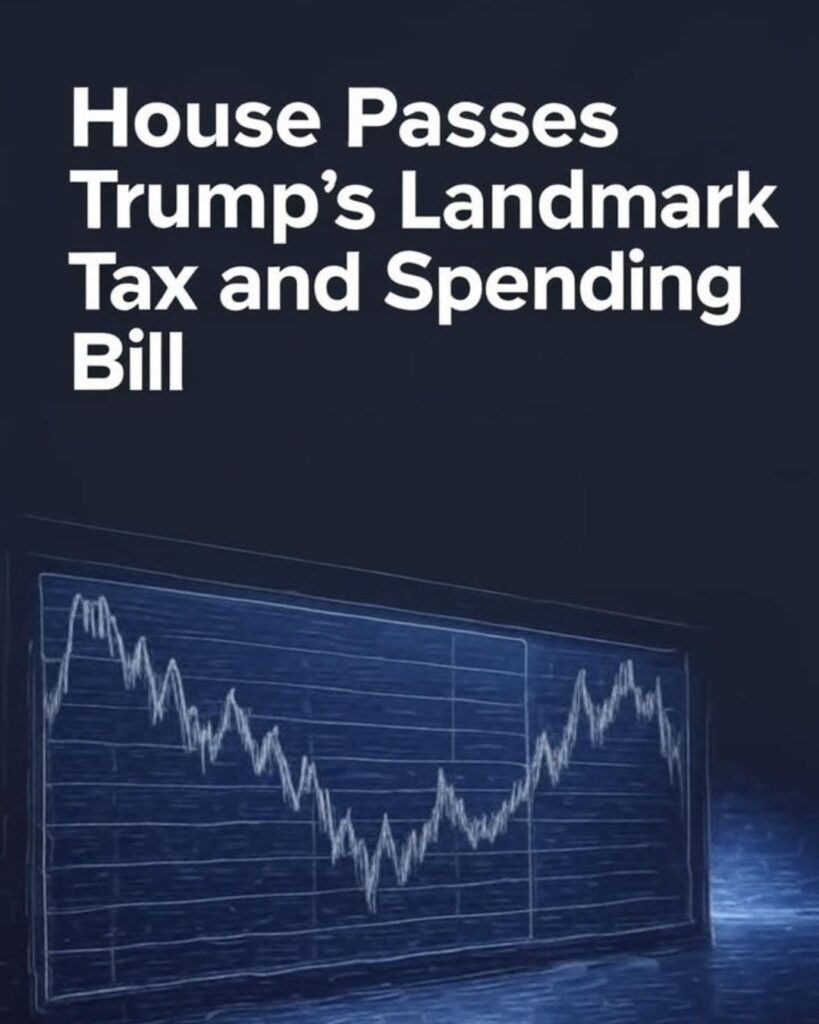Major Tax Changes and Spending Priorities Shape Economic Future

President Donald Trump has declared that his “one big beautiful” tax and spending package will transform the nation into a “rocket ship,” and the House of Representatives has formally passed it. Republicans are hailing the bill as the biggest of its kind, with broad ramifications for federal spending, healthcare, and taxes.
Extension of 2017 Tax Cuts and New Deductions
The extension of tax cuts that were put in place during Trump’s first term and were initially scheduled to expire in 2025 is a key component of the legislation. Republicans pushed to permanently remove the expiration date because they view these tax cuts as a major success. Among the tax provisions’ highlights are:
- Child Tax Credit increased from $2,000 to $2,200, now indexed to inflation
- Estate tax exemption raised to $15 million per person
- No tax on tips up to $25,000 for tipped workers
- Deduction for overtime pay, removing income tax from the “time-and-a-half” portion
- Interest deduction on car loans for domestically produced vehicles
- $6,000 deduction for seniors aged 65 and older, a partial measure aimed at lowering Social Security tax burdens
Most of these provisions will take effect in tax year 2025 and are scheduled to expire by 2028.
Rollback on Clean Energy and SALT Deduction Changes
The bill also targets environmental and state-level tax policies:
- Electric vehicle and clean energy tax credits will end for purchases after September 30th
- Wind and solar incentives will be phased out more quickly
- The State and Local Tax (SALT) deduction cap, previously at $10,000, is raised to $40,000, but begins phasing down at incomes over $500,000
These revisions reflect Republican priorities of reducing federal support for clean energy while increasing relief for high-tax states.
Spending Boosts for Defense and Border Security
Republicans added hundreds of billions of dollars in funding to favored agencies and priorities, including:
- Immigration and Customs Enforcement (ICE)
- Customs and Border Protection
- Department of Homeland Security
- Defense and Missile programs
- Shipbuilding initiatives
These spending increases align with President Trump’s push for stronger national defense and border control.
Controversial Healthcare Cuts and Medicaid Reforms
Among the most controversial aspects of the bill are its Medicaid reforms, which are projected to save $326 billion by 2034. The changes include:
- Work requirements for able-bodied recipients
- More frequent eligibility checks
- Modifications to premium tax credits under the Affordable Care Act
These reforms are expected to result in 11 million fewer people having health insurance by 2034 compared to a scenario where Congress made no changes. In response to concerns about access, the bill establishes a $50 billion Rural Healthcare Fund to support providers affected by Medicaid reductions. “This bill represents the largest and greatest loss of health care in American history,” critics argue.
Deficit Impact and Republican Defense
The Congressional Budget Office (CBO) estimates that the bill would add $3.4 trillion to the national deficit through 2034, which would already be $21 trillion if nothing changed. Republicans present two arguments:
- Assumption of Extension: Some in the Senate argue the tax cuts were going to be extended anyway, meaning this bill technically reduces the deficit by $400 billion
- Economic Growth Argument: House Republicans claim that tax cuts, deregulation, and increased energy production will accelerate economic growth, generating more tax revenue to offset costs



